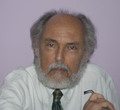The mind/body conundrum has been solved. It’s all one system, not the body with some disembodied mind or spirit hovering around it, but one whole system. The psychoneuroimmunologists have discovered and isolated the neuropeptide “molecule of emotion” as a biological carrier of emotionally charged memories and information embedded throughout the human body. We each possess within us a vast fluid network of these dynamically encoded molecules that churn out non-stop images, feelings, warnings, attractions, beliefs, etc. at the speed of light from the internal library of our subconscious and even unconscious memories into the light of our everyday awareness. Some people call this holograph-generating mechanism, the MIND. The mind, it turns out, is in the body. And the good news is, that if in fact we are biological machines the way we were taught in junior high school science class, we are biological machines with a heart. A heart that feels deeply and remembers everything.
Speaking of hearts: have you heard the story of the heart-transplant recipient who months after her surgery started experiencing the memories and food cravings of her deceased heart donor? Or have you heard that they’re curing warts with hypnosis? What’s happening to the mind/body gap? Shrinking, that’s what. Science is finally bridging the gap in ways our intuition has already been doing for years.
I’ve built a therapy on this science, and my intuition has made it into an art. I call it deep feeling therapy, and work under the credo of : “The body follows what’s in the heart and mind of a person”, so I listen and watch attentively for body responses. Body language doesn’t lie. Hurts show in the tone and timbre of speech, in soft eyes. Low self-esteem shows in hunched-over shoulders and self-demeaning speech. Physical ailments often pantomime an inner unconscious drama. The goal of my therapy is to reach the body with new information, not just reach the person’s intellect with “insight”. And that might involve regressing to the body’s essential state of awareness, which often sits deeper and more central than a person’s intellect or persona (the word personality, by the way, comes from the Greek word, persona, meaning mask). Hurts that go in when we’re three don’t just go away because we get older. And when they come out into awareness organically, it’s bound to look and sound like a three-year-old. Fetal pain comes out with no words at all. Inner integration is real and gutsy, and can look messy. It takes courage to heal.
At a primitive level we hold on to these pains in order to protect ourselves from them. Which makes good sense. A child given up at birth, for instance, must hide the devastating sense of abandonment from its own self, or risk annihilation. During the Depression, when orphanages across the United States were severely understaffed, and babies simply weren’t held or cuddled, more children perished even though they had the same adequate food and shelter as children in those same orphanages in better times. They died of neglect, and with no way to shelter themselves from it. Inner fragmentation makes sense when it aids survival, but it later becomes its own problem, and I believe, lies at the heart of setting the stage for disease.
At the Hippocrates Health Institute in West Palm Beach, Florida, where I’ve been working as a mind/body psychotherapist for the last seventeen years, we address the whole person when we address their health issue. How your relationships are going, and to what extent you have passion for what you do in life, are just as important to your overall picture of health as what you eat or how much you exercise. Health and illness don’t happen in a vacuum. They happen in the context of your humanity. The heart rests central in this process of unraveling the mystery of dysfunction and disease.
Which brings me to happiness. As children we often unknowingly contort or fragment ourselves in order to get the love we need, and thereby compromise our innate wholeness and sense of happiness. The word healing shares its root with the Greek word holos, which means wholeness. To heal is to make whole. To make whole involves getting in touch with and releasing stored pain. For one thing, it takes ongoing energy to keep pain tucked away in the body, and that same energy gushes forth in abundance with each emotionally integrative experience, and thus becomes available for healing.
With scientific validation to back me up, I say that accessing deep inner feelings lays out a pathway to health not because of any therapeutic school of thought, but because of biology itself. As human beings we are wired for wholeness and happiness, and they remain our destiny--a destiny which needs only our agreement and willingness to release and/or overthrow anything internal that blocks them. Deep feeling therapy lends a helping hand in this righteous quest for health.
Andy Bernay-Roman is a Florida Licensed Mental Health Counselor, a Registered Nurse, and a Licensed Massage Therapist, who practices his unique form of body-oriented psychotherapy primarily at the Hippocrates Health Institute in West Palm Beach, Florida. Find out more about his work through his book, Deep Feeling, Deep Healing: The Heart, Mind, and Soul of Getting Well (ISBN 0-9708662-0-8, Spectrum Healing Press, 2001), available at his website http://www.deepfeeling.com. He can also be reached at 561.471.5867.

Post new comment
Please Register or Login to post new comment.